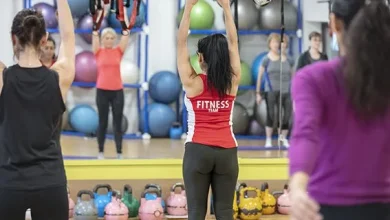Expert Advice on Installing and Using Your Car Seat Properly
Expert Advice on Installing and Using Your Car Seat

Installing and using a car seat correctly is one of the most critical aspects of ensuring your child’s safety while traveling. Unfortunately, many parents are unsure about the proper techniques, leading to the risk of injuries in case of an accident. This article provides expert advice on how to install and use your car seat properly, equipping you with the knowledge you need for a safer journey with your little one.
Choosing the Right Brand
When selecting a car seat, consider trusted brands like Babymore. Babymore is a respected British brand specializing in designing and manufacturing high-quality nursery furniture and baby products. With years of experience, Babymore offers a wide range of award-winning cribs, cot beds, mattresses, prams, pushchairs, and car seats, ensuring that your child has the best in safety and comfort.
Types
Before diving into installation, it’s essential to understand the different types of car seats available. Each type is designed for specific age groups and weight limits, so choosing the right one for your child is crucial. Here are the main categories:
- Infant Car Seats: These rear-facing seats are suitable for newborns up to around 12 months or until they reach the weight limit (typically around 22-35 pounds). They are portable and often come with a carrying handle.
- Convertible Car Seats: These seats can be used in both rear-facing and forward-facing positions, accommodating children from infancy through preschool years. They typically have a higher weight limit, making them versatile.
- Booster Seats: Designed for older children who have outgrown their convertible car seats, booster seats elevate the child so that the seat belt fits properly across their chest and lap.
Understanding the type of car seat that suits your child’s needs is the first step toward proper usage.
Installation: Getting It Right
Installing a car seat can seem daunting, but following a systematic approach can make the process straightforward. Here are some expert tips to ensure you install your seat correctly:
Read the Manuals
- Car Seat Manual: Every seat comes with a user manual. Read it thoroughly to understand the installation instructions specific to your model.
- Vehicle Manual: Your vehicle also has guidelines for seat installation. Refer to it to identify the best spot for installation (usually the rear middle seat).
Choosing the Right Spot
Location Matters: The safest place to install a car seat is in the back seat, preferably in the middle position, as it is farthest from potential impact zones.
Secure Your Car Seat: Use either the vehicle’s seat belt or the LATCH (Lower Anchors and Tethers for Children) system for securing the car seat. Ensure it is tight and doesn’t move more than an inch when tested.
Rear-Facing vs. Forward-Facing
Rear-Facing: For infants, keep the cseat rear-facing as long as possible, at least until they reach the upper weight or height limit specified by the manufacturer.
Forward-Facing: Once your child outgrows the rear-facing limit, switch to forward-facing. Use the harness system until they reach the maximum height or weight limit before transitioning to a booster seat.
Key Guidelines
Once your car seat is installed correctly, using it properly is vital for your child’s safety. Here are some essential guidelines:
Harnessing Your Child
Harness Position: Ensure that the harness straps are at or below your child’s shoulders when rear-facing and at or above their shoulders when forward-facing.
Tighten the Straps: The harness should fit snugly against your child’s body. You should be able to fit no more than one finger between the straps and your child’s collarbone.
Avoid Common Mistakes
- Avoiding Bulky Clothing: Dress your child in thin layers rather than bulky clothing that can affect the fit of the harness.
- No Loose Straps: Ensure that the straps are not twisted and are adjusted appropriately each time your child gets into the seat.
The Importance of Booster Seats
As your child grows, transitioning to a booster seat is essential for ensuring their safety.
- Age and Size: Most children should use a booster seat until they are at least 4 feet 9 inches tall and between 8-12 years old.
- Proper Seat Belt Fit: A correctly fitted seat belt should lie across the upper thighs (not the stomach) and across the shoulder (not the neck).
Checking for Recalls and Expiry Dates
Regularly check if your car seat has been recalled by visiting the National Highway Traffic Safety Administration (NHTSA) website. Additionally, car seats have an expiry date, usually between six to ten years from the date of manufacture. Ensure you replace your car seat after it has expired or been involved in a crash.
Conclusion: Your Child’s Safety Matters
Installing and using a car seat properly is crucial for your child’s safety during car journeys. By understanding the different types of car seats, following installation guidelines, and ensuring proper use, you can significantly reduce the risk of injury. Regularly check your car seat for recalls and expiry dates, and always opt for trusted brands like Babymore. Remember, a correctly installed and used car seat is one of the best investments you can make for your child’s safety on the road.





